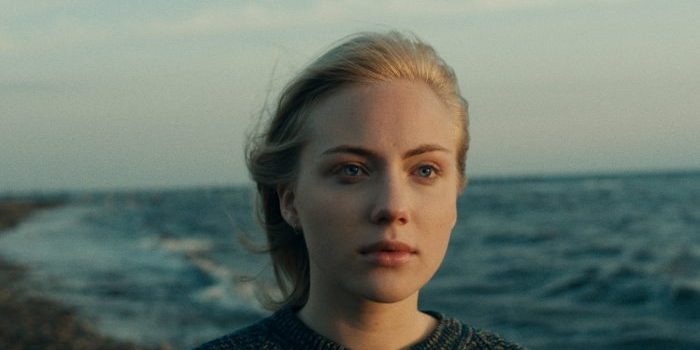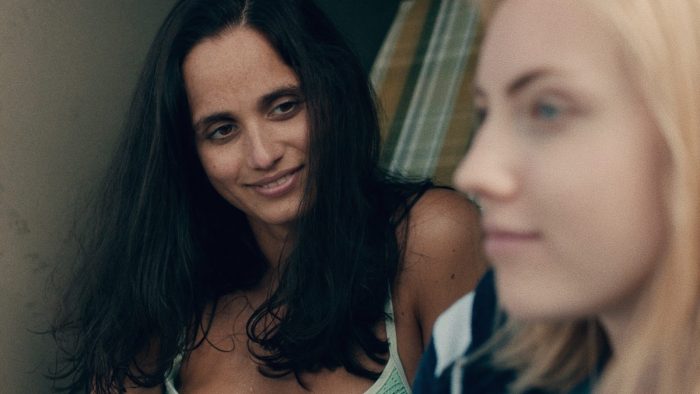Taking its name from an old fable in which an idle cricket sings and dances its summer away while the diligent ant toils in preparation for the coming winter, Julia Ritschel’s The Cricket and the Ant (La Cigale et la Fourmi) is a sensitive coming-of-age film from Germany that raises the possibility of reconciliation between these two different ways of living. The cricket’s frivolity is reflected in the young Lena (Elisa Schlott), a student in the midst of an intimate affair with her French teacher, Katharina (Tabita Johannes). But when Katharina starts having reservations about this forbidden romance, Lena is pushed to reconsider the balance between her desires and her responsibilities.
With The Cricket and the Ant screening in London on January 13th as part of the New Queer Visions event, “Don’t Look Back in Anger”, we got in contact with Ritschel to discusses the writer-director’s new short.
What was the inspiration for this story?
The story in the film of The Cricket and the Ant is half autobiographical. Since it is my first film as a director, I wanted to make a strong and personal film that touches people. When I started writing I also found an old French exam at home which was about the fable of the cricket and the ant by French author Jean de la Fontaine. In the exam we had to answer the question if we’d prefer to live like the cricket or the ant. Then I didn’t pick a side and explained that I’d like to combine both worldviews with each other to be happy in the end. I got a bad grade because I didn’t make a decision.

That was the main reason why I used the fable in the film; to me it stands as a metaphor for the whole story which is about making decisions for your life however hard they might be.
Do you feel that the film offers a moral stance on its student-teacher relationship? Or is it up to the audience to decide whether it’s right or wrong?
When I wrote the story, I never thought of categories like right or wrong because the main reason to make this movie was to create a powerful love story which is real and which exists even if it doesn’t succeed. I wanted to show how passionate and exciting but also how complicated and painful love can be, especially when it’s your first love. The main character in the film, Lena, is 18 years old and in her senior year at high school. That makes it in Germany not forbidden to be in a relationship with your teacher.
But of course it is a sensitive topic and most likely not appreciated by others. And I do understand everybody who might have a problem with it, especially in these times where abuse becomes unfortunately more and more common. But that wasn’t the intention in this film. In my opinion we don’t choose who we love, we just choose how we want to live and who we want to be with in the end. And I hope that’s the message that the audience will go out with.
What was the process like of working with the film’s two lead actresses to create these characters and the chemistry between them?
Four months before we started shooting we were doing constellation castings in Berlin for both roles, the student and the teacher. Elisa Schlott, playing young student Lena, was the first girl coming to the auditions and she blew us away. She put so much strength and emotion into the character that we decided on the next day to cast her.

We still hadn’t found the teacher so we invited a couple of actresses to another casting audition together with Elisa. Tabita Johannes, who got the role in the end, was the last actress coming that day. I could feel a chemistry between the two of them right away and it was a joy to watch them and to talk about the characters with them. They were both really open and interested in creating authentic characters in the film. It was really important for me to establish an atmosphere of trust. We did a lot of rehearsals, especially for the intimate scenes so that everybody felt comfortable with it. I was really happy to have those two great actresses in my first film who are not just talented but also highly sensitive, compelling and dedicated to their roles!
What was the location for the film’s opening and closing beach scenes?
We were shooting the opening and closing scenes of the film at the Baltic Sea. To me the sea always stands for a certain kind of longing, freedom and peace. At the beginning of the film, Lena and her teacher Katharina are madly in love, everything is still exciting and full of tension. But in the end Lena has to find her own way out of the situation, making her own decisions, to look into the future with hope even though she is sad. The Baltic Sea was the perfect place to combine all of those different feelings.
Do you sympathise more with the fun-loving cricket of the story or the more disciplined, serious-minded ant? Or does your worldview lie somewhere in between?
As I tried to already answer in the first question, my worldview really lies somewhere in between. It did when I was young and it still does, now that I am not so young anymore. But that’s my opinion. In many ways, the mixture makes it.
Do you have any plans yet for your next film?
Right now I am working on my first feature. It will be a love story again, but this time between two female best friends struggling between love and friendship and all other obstacles in life.





